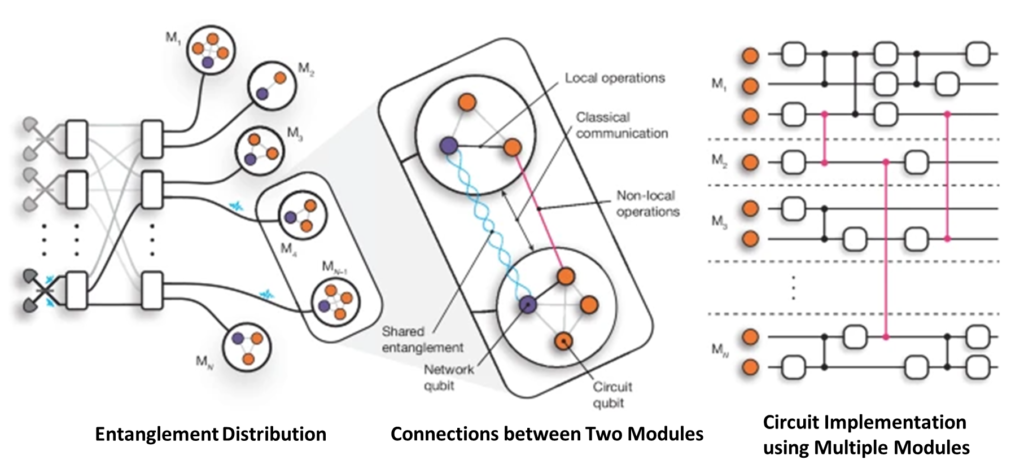Scientists at Oxford University Physics have demonstrated the first instance of distributed quantum computing, linking two separate quantum processors to form a fully connected quantum computer. Published in Nature on February 5, 2025, the breakthrough addresses the scalability challenge of quantum computing by enabling computations to be distributed across multiple devices, paving the way for large-scale quantum supercomputers.
The team used a photonic network interface to connect trapped-ion qubits in separate modules, leveraging quantum teleportation to perform logical gates across the network. This approach allows small quantum devices to be linked via optical fibers, creating a scalable architecture that avoids the engineering challenges of packing millions of qubits into a single machine. The researchers successfully demonstrated the method by running Grover’s search algorithm, showcasing its potential to solve complex problems far beyond the capabilities of classical supercomputers.
By implementing quantum logic gates across physically separate modules using entanglement, the study establishes a viable method for modular quantum computing. This distributed approach enables fault-tolerant computation while maintaining quantum coherence, overcoming key limitations of monolithic architectures. The photonic interconnects facilitate seamless expansion and potential integration into a future quantum network, supporting large-scale, high-performance quantum computation. The research, funded by UKRI EPSRC via the UK Quantum Computing and Simulation Hub, lays the groundwork for scalable quantum architectures and a future quantum internet.
For more information, read a news release provided by Oxford University here and the full study published in Nature available here.
February 5, 2025


